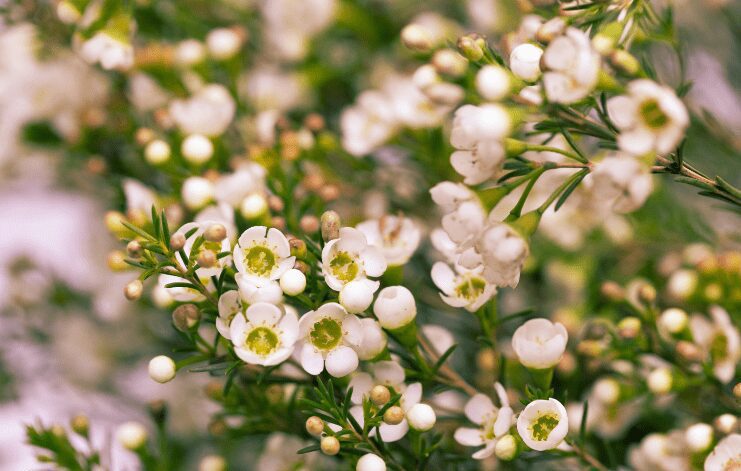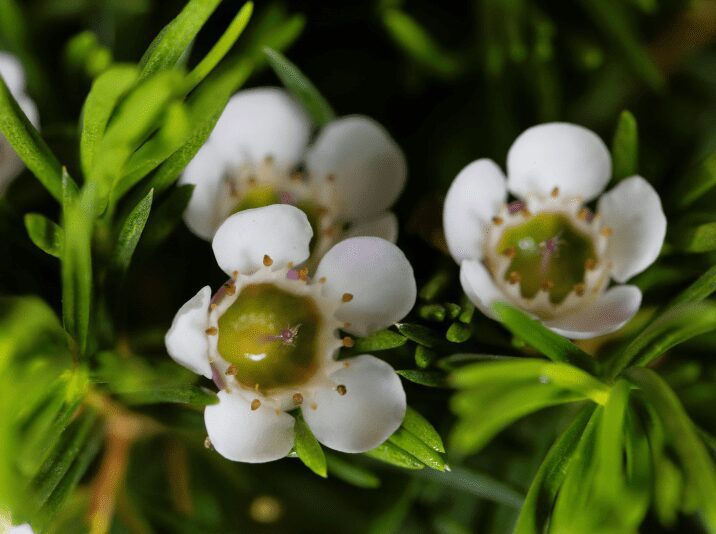What Is White Wax Flower, Anyway?

The beautiful white Wax Flowers are a perennial shrubs native to Western Australia. It features five waxy petals on each stem, and its leaves contain oil glands that give off a fresh fragrance.
Other varieties can be found in English Guinea and Madagascar. In 1819, French botanist Rene Louiche Desfontaines named the flower. It is available in floral wholesalers across the United States, Canada, and Europe.
These flowers can last anywhere from 14 to 21 days in a vase. They are often sold by color. Because they have woody stems, you may find them difficult to cut, but don’t fret: they will still have plenty of blooms.
These flowers are a product of Mother Nature, and their colors can vary slightly due to the resolution of monitors.
Check the variety description and care instructions if you want to purchase the white wax flower.
Chamelaucium Wax Flower

The Chamelaucium Wax Flower is a dense shrub that grows between four and six feet tall. It is a member of the myrtle family and prefers dry soil. It blooms in late winter and early spring and requires regular watering.
However, if you live in a hot climate, you should water it as soon as the soil becomes dry. Unlike some flowers, it does not prefer moist soil, so it is best to place it in a location with a mild climate.
The White Wax Flower is a popular filler flower that can add a beautiful accent to your floral arrangement.
Its delicate petals can be paired with other flowers and are often used in wedding bouquets.
Because of its affordability, it can replace an expensive baby’s breath and is a symbol of love.
When planning a country or boho wedding, you can place these flowers in mason jars or antique vases.
Other Varieties Of Wax Flowers
- Philotheca myoporoides “Profusion,” which is excellent for mixed shrubbery,
- P. buxiflorius “Cascade of Stars” has an elegant flowing habit suitable for containers.
- P. buxifolius, or box leaf wax flower with dense, short, rounded leaves and pink to white flowers perfect for ground cover and coastal gardens, are other cultivars worth mentioning.
- Eriostemon australasius has appealing grey/green leaves with very showy, substantial pink flowers in the winter and spring.
- P. myoposroides, this long-leafed wax flower, has white blooms and dark green, strongly-scented leaves.
White Wax Flowers Pests
Philothecas may occasionally experience scale insect attacks along the stems and branchlets, but these are easily managed by putting white oil on the affected areas.
Spray twice, each around seven to fourteen days apart, whenever scale is seen. An application could be used twice or three times a year as a prophylactic measure.
Soil
Frequently referred to as native daphnes or wax flowers, Philothecas prefer neutral to acid, well-draining soil in the sun to partial shade.
Once established, they are tolerant of relatively dry circumstances and may be cultivated in light or heavy soils.
Like most Australian native plants, Philothecas responds well to a blood and bone meal feed, which should be applied for the first time in August and repeated every two months until April.
Late autumn is the time to stop feeding, or you can use a slow-release


























